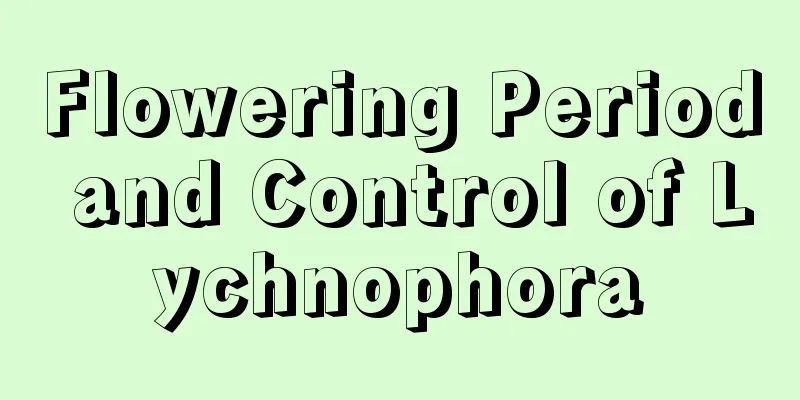How to grow monkey orchid

1. Maintenance methods1. Temperature: The temperature suitable for its growth is about 20 degrees. When the temperature exceeds 25 degrees, it is necessary to take cooling measures. Generally, a fan or high-pressure water mist system is used to cool it. When the temperature is below 10 degrees, it needs to be heated and moisturized to prevent the plant from freezing. 2. Watering: The environment in which it grows should be kept dry, with a humidity of 50%. If the humidity is too high, the plant will be easily infected by pathogens. If the humidity exceeds 70%, ventilation is needed to prevent the plant from being infected by pathogens. 3. Fertilization: It requires very little nutrients, but the fertilizer consumption will increase during the growing period. It needs to be fertilized once every two weeks, and no fertilizer is needed at other times. Fertilizers should be selected with milder effects, such as animal manure, farm compost, etc. 4. Light: It does not require strong light, diffuse light can meet its needs. The daily light exposure should not exceed six hours. The light exposure time can be appropriately increased in autumn and winter, because the light in these two seasons is relatively mild, which can extend the time of sunlight exposure. 2. Breeding techniques1. Reproduction: It can be propagated by sowing. It can self-pollinate, but the seeds tend to scatter, so they need to be collected. Its seeds are very small and can be grown in flat trays. There is no need to cover the seeds with soil, and seedlings will grow in a month. After the seedlings emerge, there is no need to water them, just keep the soil slightly moist. The purpose of this is to help the plants develop. When the seedlings grow to ten centimeters, they can be transplanted and planted. 2. Pruning: Generally, pruning is not required. You only need to cut off the broken and rotten leaves. If you change the pot, you also need to clean up the rotten roots. 3. Problem Diagnosis1. Root rot: Plants are infected with root rot mostly because the soil is too moist and the soil is not breathable. The plants need to be dug out, the rotten roots cleaned out, the incisions disinfected, and then replanted in soil with good breathability. 2. Anthracnose: This disease occurs in the rainy season, and reddish-brown circular spots will appear on the branches and leaves. First, the infected branches need to be cut off, and then use anthracnose emulsifiable concentrate to spray for treatment. IV. Other issues1. Toxicity: It is not poisonous, but its fragrance is quite strong. If it is cultivated in a closed space for a long time, the fragrance will be too strong and will cause dizziness in people. Therefore, frequent ventilation is needed to disperse the odor. 2. Edibility: It is not edible. |
<<: How to grow dogtooth flower
Recommend
Can tiger lily be planted in sand?
1. Can sand be used for planting? Tiger Pira can ...
How to water Dutch chrysanthemums
1. Its demand for water This plant prefers a mois...
The difference between snake bed and carrot
1. Plant differentiation The carrot plant is rela...
Maintenance and management of wintersweet bonsai
Placement of Wintersweet Bonsai The bonsai of win...
How to fertilize and water daffodils
The plant's requirements for water and fertil...
Time and method of changing soil for Brazilian wood
Brazil wood soil replacement time For the rubber ...
How to grow jasmine so it blooms three times a year
1. First flowering June and July are the first mo...
When is the best time to sow peony seeds?
Peony seed sowing time Peony seeds usually mature...
What is the best month to plant okra? When is the best time to plant it?
Which month is suitable for planting okra? Okra c...
How long is the growth cycle of eggplant?
Eggplant growth cycle Eggplant is suitable for cu...
Is rice a tropical crop? What kind of crop is it?
Is rice a tropical crop? Rice is a tropical crop ...
The efficacy and function of Toad Grass
effect It has the effects of detoxification, reli...
c What fertilizer is best
Fertilization time for calamus The time for ferti...
Are chrysanthemums suitable for deep or shallow pots?
Should chrysanthemums be placed in deep or shallo...
How to plant and care for lilies? When and how to plant lily bulbs
Lily planting is usually carried out in spring an...









